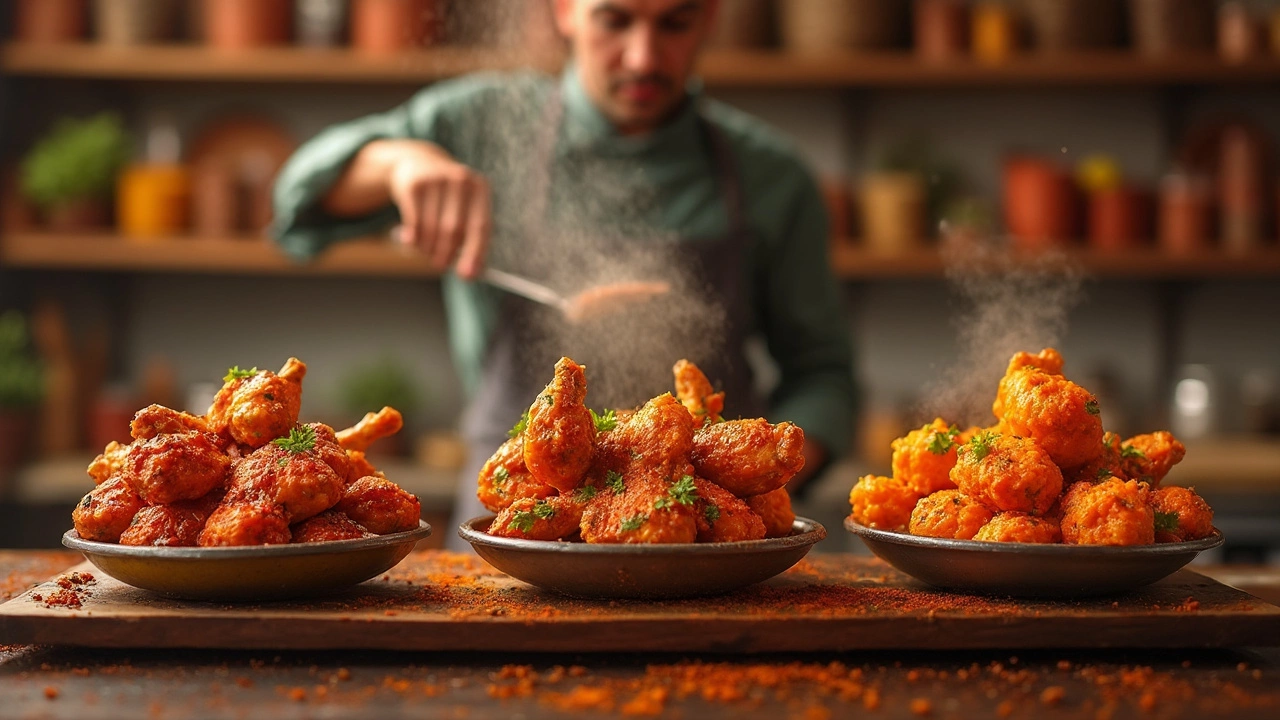Tandoori Recipes – Master the Art of Indian Grilling
When working with Tandoori recipes, a collection of Indian dishes cooked in a clay tandoor oven using a spiced yogurt marinade. Also known as tandoori cooking, it brings together heat, smoke, and bold flavors. One of the most beloved examples is Tandoori chicken, the classic protein that shows off smoky, charred flavor, which demonstrates how a simple protein can become a flavor powerhouse. The process requires a tandoor oven, a cylindrical clay furnace that reaches 480 °C and creates that signature sear and a yogurt‑based marinade, the acidic base that tenderizes and carries spices. Together they form the backbone of every tandoori dish.
Tandoori recipes encompass a range of dishes that rely on high‑heat grilling. They require a yogurt‑based marinade to tenderize meat, while the spice blend—often called tandoori masala—infuses smoky flavor. The marination step lets the acidic yogurt break down proteins, allowing the spices to stick and the heat to penetrate evenly. When the dish hits the tandoor oven, the intense temperature creates a rapid Maillard reaction, giving that coveted char and aroma. This combination of yogurt, spices, and intense heat explains why tandoori chicken tastes so irresistible.
Key Elements of Tandoori Cooking
First, pick the right yogurt. Full‑fat, plain yogurt works best because its fat content balances the acidity and helps form a glossy coating. Next, blend your spices: cumin, coriander, paprika, garlic, and a pinch of fenugreek create depth, while red food coloring—optional—adds visual appeal. The marinade should coat the meat evenly; let it rest for at least four hours, preferably overnight, to let flavors meld. When you’re ready, preheat the tandoor or a very hot grill, brush the grates, and place the marinated pieces close to the heat source. The goal is a quick sear on the outside while the inside stays juicy.
For home cooks without a tandoor, a regular oven set to broil can mimic the high heat. Position a wire rack on a baking sheet, place the meat on the rack, and broil until you see charred edges. Sprinkling a few drops of liquid smoke on the tray adds that authentic smokiness. Many chefs also use a charcoal kettle grill, arranging the coals on one side and the meat on the opposite to control temperature. The underlying principle stays the same: intense, direct heat plus a flavorful yogurt‑spice coating.
While chicken dominates the tandoori conversation, the technique adapts to vegetables, paneer, and even seafood. Tandoori cauliflower, for example, benefits from the same yogurt‑spice layer, turning a humble veg into a restaurant‑grade side. Tandoori paneer absorbs the marinades beautifully, offering a vegetarian alternative that retains the charred bite. Even shrimp, when briefed in the same process, turns succulent and slightly crisp. The versatility of tandoori recipes lies in the universal marination rule: acidic base + spice blend + high heat.
Beyond the core ingredients, tools matter. A stainless steel skewer or metal grill basket makes flipping easier and ensures even cooking. If you own a mini‑tandoor, keep the fire steady with seasoned wood or charcoal; the ash acts as a natural insulator, preserving consistent temperature. Monitoring the internal temperature of meat (165 °F for chicken) guarantees safety without overcooking. For aficionados, adding a dash of mustard oil to the marinade injects an extra layer of pungency that pairs well with the smoky notes.
Regional variations add intrigue. In Punjab, the dish leans heavily on mustard seeds and cheddar cheese for richness, while in Hyderabad, a whisper of saffron brightens the sauce. These twists illustrate how tandoori recipes serve as a canvas for local flavor palettes, making each version uniquely satisfying. Understanding these subtleties helps you experiment without losing the hallmark char.
Now that you’ve got the science and the steps down, you’re ready to explore the collection below. From classic tandoori chicken to inventive vegetable twists, the posts dive deeper into marinades, spice blends, oven hacks, and health‑focused tweaks. Keep reading for practical tips that turn your kitchen into a mini‑tandoor and elevate every grill night.

Healthier Choice: Chicken Tikka vs. Tandoori Chicken
Ever wondered if chicken tikka or tandoori chicken is healthier? Both are popular Indian dishes, known for their flavorful spices and juicy taste. This article breaks down the health aspects of each, providing insights into ingredients, nutritional comparisons, and cooking techniques. Learn which one suits your diet better and pick up tips to make either dish healthier without sacrificing flavor.